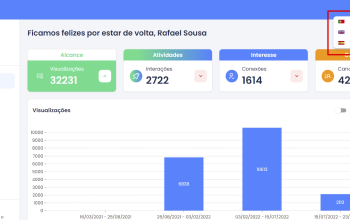Get to know Enterprise Translation Management System


Enterprise Translation Management System
An Enterprise Translation Management System automates translation processes for product information, eliminating tedious and repetitive manual tasks.
An Enterprise Translation Management System provides you with a comprehensive way to manage your translation processes, ensuring closer collaboration within the team and significantly increasing efficiency.
Additionally, the centralization of all linguistic resources ensures greater transparency across the entire translation chain, which is crucial for optimizing translation workflows within your company.
Why the use of Enterprise Translation Management Systems is important, what advantages the software solution offers, and what it is, will be explained in the following article.
What is an Enterprise Translation Management System?
An Enterprise Translation Management System is a specialized software solution that helps your company efficiently manage and automate your translation and localization processes.
The systems provide a central platform for:
- Organizing all translation projects
- Storing and managing texts
- Collaborating with translators and language service providers
- Managing terminology
- Integrating translation tools like Translation Memories and machine translation service
An Enterprise Translation Management System allows a company to standardize all translation work, improve the quality and consistency of translations, save time and costs, and increase the efficiency of localization processes. It is particularly suitable for companies with large translation needs or complex multilingual projects.
What is the difference between a Translation Management System for Enterprises and Translation Management Systems?
A Translation Management System is designed to manage translation projects.
It includes basic functions such as assigning translation tasks, tracking progress, managing Translation Memories and terminology databases, and integrating machine translation tools.
A Translation Management System is typically intended for small to mid-sized companies or translation agencies looking for a central platform to organize their translation work but with no need for extensive or complex features.
A Translation Management System for Enterprises, on the other hand, is an enhanced version of a Translation Management System specifically aimed at large companies with complex multilingual translation requirements.
It includes all the basic functions of a Translation Management System but is additionally tailored to the needs of large, globally operating companies.
It comes with extended features such as integration with other enterprise systems (e.g., content management systems, e-commerce platforms, product information management), enhanced security features, detailed reporting and analytics options, as well as the ability to manage large amounts of content and collaborate with numerous translators and teams worldwide.

What are the advantages of a Translation Management System for Enterprises?
If your company is one of those that needs an organizational tool for translation processes, using one comes with several notable advantages:
Central platform where all translation projects can be organized and managed, facilitating coordination between different teams, translators, and service providers, as all parties have access to current documents and resources at any time.
Through the automation of translation processes the time required to manage translation projects is significantly reduced.
Localized products and services can be brought to market faster.
An Enterprise Translation Management System helps companies save costs by utilizing Translation Memories. Translation Memories store already translated segments that can be reused for future projects, eliminating the need for repeated translations and reducing translation costs.
Through the use of central terminology databases and style guides an Enterprise Translation Management System ensures that translations are consistent and of high quality.
Detailed insights into the status and progress of translation projects ensure better control and planning.
For companies operating in multiple markets and working with different languages, an Enterprise Translation Management System is especially advantageous. It can easily scale to meet growing demands, whether by supporting additional languages or integrating with other enterprise systems like content management systems or product information management tools.
What does an Enterprise Translation Management System cost?
The cost of an Enterprise Translation Management System can vary significantly and depends on several factors, including the range of functions, the number of users, integration options with other systems, and the type of implementation (cloud-based or on-premise).
In general, you can expect the following costs for an Enterprise Translation Management System:
License fees depending on the provider and chosen features, ranging from a few thousand to several tens of thousands of euros per year.
Setup and implementation costs such as system configuration, integration with existing enterprise applications, workflow customization, and possibly the migration of existing data.
Training and support to ensure uniform application across the team and quick access to support in case of problems.
Additional modules and integrations if you need special integrations, extended reporting functions, additional security measures, or machine translation services.
Cloud-based vs. On-premise where cloud-based solutions often have lower setup fees and usage-based billing, while on-premise solutions require higher initial investments for hardware and IT infrastructure but may have lower ongoing costs in the long run.
➡️ Create a free account to explore our software for your business.

